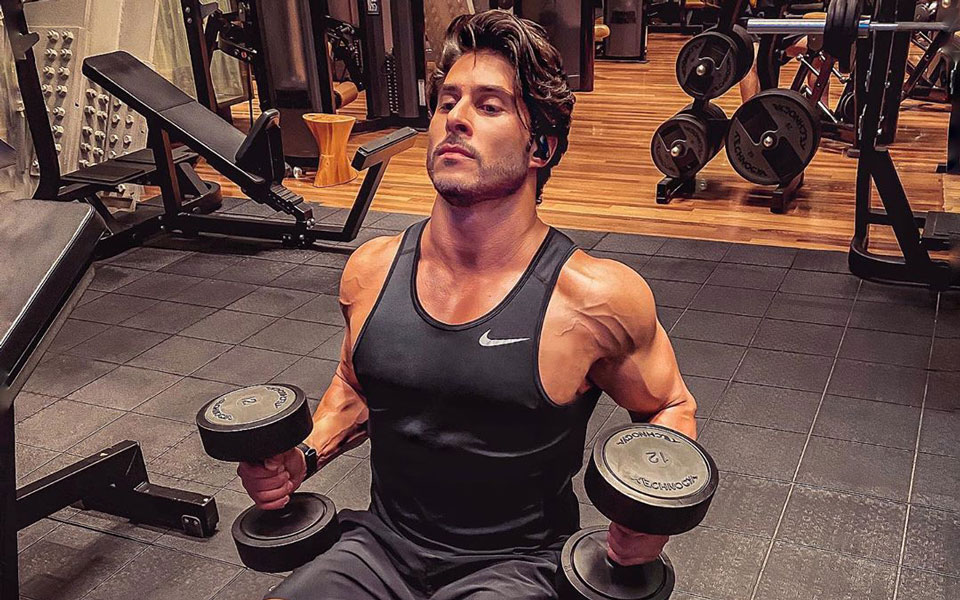In order to get muscle peaks the size of Everest, you need to be lifting the heaviest weight your body can muster, right? Not exactly.
Yes, being able to bench, curl or lift heavy weights will improve your strength, but you can’t expect to step foot on the gym floor and be able to smash out reps as though you were The Mountain from Game of Thrones. In order to get stronger, you need to undergo a regime known as progressive overloading.
RELATED: Shop The Best Protein Powders
So, what is it? Personal trainer and online fitness coach Jonas Hereora says it “means to continually increase the demands placed on your body through training.”
“The end goal is usually to improve muscle hypertrophy (muscle growth) or strength.”
https://www.instagram.com/p/B89xXQ6A0Gj/
If you’re a regular at the gym, you would have likely heard of progressive overloading before, but there’s a good chance you thought the only real way to do it is to simply increase the weight you lift. Jonas says that while this can be the case, there are actually a number of other methods you can employ to get the same end result.
He recommends training techniques such as keeping the weight the same but gradually increasing the number of reps you complete. For example, lift a 50kg bench press for 8 reps, and then the next time you workout your chest complete 9 reps, and add one more rep each time for around four weeks. Then you can add on a little bit more weight and carry out the same process again.
Jonas also suggests adding more sets into your workout; if you usually complete 3 sets, try going for 4 or 5. It could be that you’ll have to decrease the weight you usually lift, but lifting it several more times will have profound benefits for your muscle gain.
View this post on Instagram
Other techniques you can introduce to your workouts to add some variety include resting for shorter periods between sets to give your muscles less time to recover, or what’s known as ‘Myo-reps’. This is a type of rest-pause technique that aims for maximum muscle fibre activation. To complete Myo-reps, first carry out an ‘activation’ set to failure, or around 10-12 reps, rest for roughly 15 seconds while taking 4 to 5 deep breaths and then complete the first Myo-rep set to failure, usually around 6-8 reps. Rest again, complete another set and continue to do so, with 15 second rests until you can’t complete one lift without compromising your form.
Progressive overload is a strict method you need to stick to notice results, but even science can prove it works, with a 2010 study conducted by Peterson et al. taking a group of 43 males and 40 females, and getting them to gradually increase the weight lifted by their non-dominant arm. After a 12 week period in which the weight was increased every four weeks, both groups recorded an increase in whole muscle volume: 85.7mL for males and 62.4mL for females.
A more recent study carried out by researchers at the University of Lincoln, UK, took a group of experienced weightlifters and asked them to undergo percentage-based, or velocity-based training for a six week period, to see how their performance changed. Percentage-based training requires a weightlifter to lift a percentage of the maximum amount of weight they can lift. This is repeated over days and weeks to increase muscle strength.
Velocity-based training meanwhile measures the time it takes a weightlifter to lift the weight. The PBT group carried out training as they normally would, while the VBT group could have their weight decreased or increased, depending on how quickly they could lift. If they struggled one day, the weight would be reduced, if they were able to lift as quickly on one day as the previous, their weight would be increased.
The VBT group lifted less weight over the course of the study, but researchers found their performance improved more than the PBT group. Dr Harry Dorrell “It’s about making sure the athlete is lifting the optimal load for them on that particular day,”
“If you lift too little, then you won’t stimulate the body as you intend to, but if you lift too much, you’ll be fatigued, which increases the risk of injury.”
So if you’re not seeing an increase in size in your arms or chest, try introducing some new techniques to get over the plateau and activate your muscles. You’ll be making gains in no time.
RELATED: Shop The Best Pre Workout Supplements & Muscle Stacks
